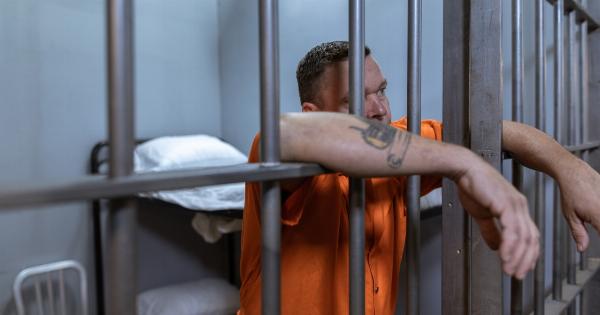Incarceration is a topic that continues to captivate the minds of people around the world. With millions of individuals locked behind bars, it’s crucial to take a closer look at the various aspects of imprisonment.
From the reasons behind incarceration to its long-lasting effects, this article aims to provide an in-depth exploration of the prison system and its impact on individuals, families, and society as a whole.
The Origins of Incarceration
Imprisonment, as a form of punishment, has evolved over centuries. Its origins can be traced back to ancient civilizations, where confinement was commonly used as a means to deal with criminals.
The objective was to separate wrongdoers from the rest of society and deter others from committing similar offenses. As societies progressed and legal systems developed, prisons emerged as the primary method of punishment.
The Purpose of Incarceration
One of the fundamental purposes of incarceration is to ensure public safety. By removing individuals who pose a threat to society, it aims to create a sense of security within communities.
Additionally, imprisonment serves as a form of retribution for the crimes committed. It seeks to hold individuals accountable for their actions, delivering what society deems as a fair punishment.
The Rehabilitation Debate
While incarceration is primarily focused on punishment, the concept of rehabilitation has gained prominence over the years.
Proponents argue that prisons should serve as a platform for reform, providing inmates with opportunities to acquire new skills and education that can help them reintegrate into society upon release. However, the effectiveness of rehabilitation programs within prisons remains a subject of substantial debate.
The Impact on Families and Communities
When individuals are imprisoned, their families often bear the brunt of the consequences. The emotional, financial, and social impacts can be severe, as families struggle to cope with the absence of their loved ones.
Children, in particular, may suffer from the absence of a parent, with studies indicating that the experience can have long-lasting effects on their well-being and future prospects. Furthermore, communities heavily affected by mass incarceration often experience significant social and economic challenges.
The Disproportionate Incarceration of Minorities
One of the concerning facts about incarceration is the disproportionate representation of minorities within the prison population.
Across many countries, racial and ethnic minorities are overrepresented in prisons compared to their share of the general population. This phenomenon raises questions about systemic bias, discrimination, and unequal access to legal representation, resulting in a criminal justice system that perpetuates inequality.
The Prison Industrial Complex
The concept of the prison industrial complex refers to the intersection of government and corporate interests that perpetuate the growth and profitability of the prison system.
Critics argue that these interests have created a system that prioritizes incarceration over rehabilitation, leading to longer sentences and higher recidivism rates. Moreover, the involvement of private companies in the prison industry raises concerns about the monetization of human lives.
The Alternatives to Incarceration
A growing movement advocates for alternatives to traditional incarceration. These alternatives focus on prevention, rehabilitation, and restorative justice.
Community-based programs, such as drug treatment courts, mental health diversion programs, and restorative justice initiatives, offer alternatives that aim to reduce recidivism rates while addressing the root causes of criminal behavior.
The Long-Term Effects of Incarceration
After individuals are released from prison, they often face numerous challenges that hinder their reintegration into society. These challenges include finding employment, rebuilding relationships, and overcoming the stigma associated with incarceration.
Studies have shown that the transitional period after release is critical, and support services are crucial to breaking the cycle of recidivism.
The Need for Criminal Justice Reform
Given the complexities and issues surrounding the prison system, calls for criminal justice reform have become increasingly urgent.
Many believe that the current system fails to address the root causes of crime, perpetuates inequality, and does little to prevent recidivism. Reform efforts aim to create a fairer, more effective, and more humane criminal justice system that prioritizes rehabilitation and reintegration.
The Role of Society in Reintegration
Society plays a pivotal role in the successful reintegration of individuals after incarceration. Communities that provide support and opportunities for former inmates have a higher likelihood of reducing recidivism rates.
By challenging stigmas, promoting second chances, and investing in rehabilitation programs, society can contribute to the reformation of those who have paid their debt to society.
In Conclusion
Incarceration remains a contentious topic, demanding a closer look at the various aspects surrounding it.
From examining its historical origins to understanding the impact on individuals, families, and communities, it is crucial to question the current state of the prison system and strive for meaningful change. By prioritizing rehabilitation, ensuring equitable treatment, and investing in alternatives to incarceration, societies can work towards creating a criminal justice system that fosters lasting rehabilitation and social reintegration.






























